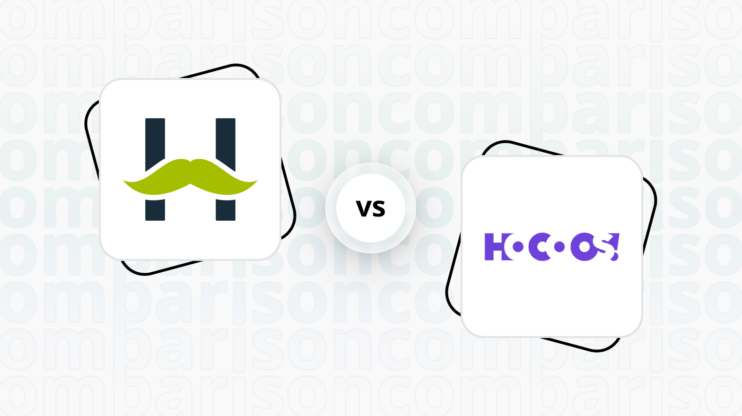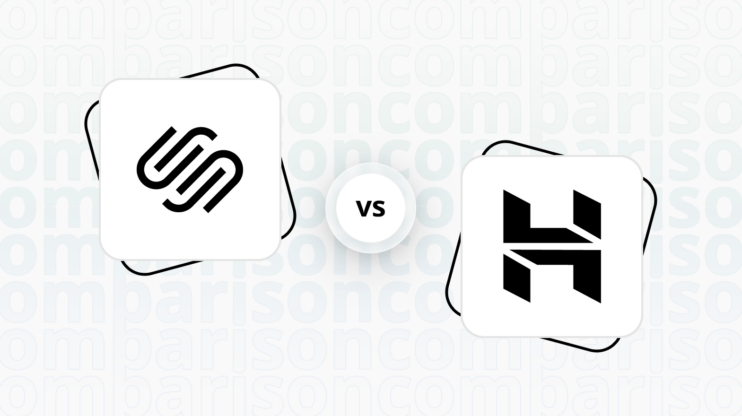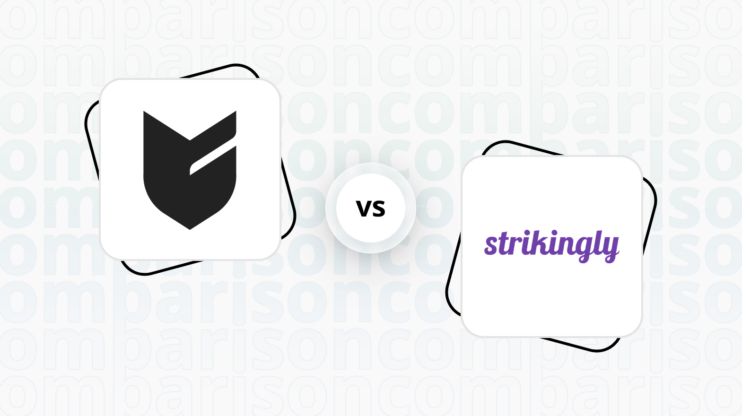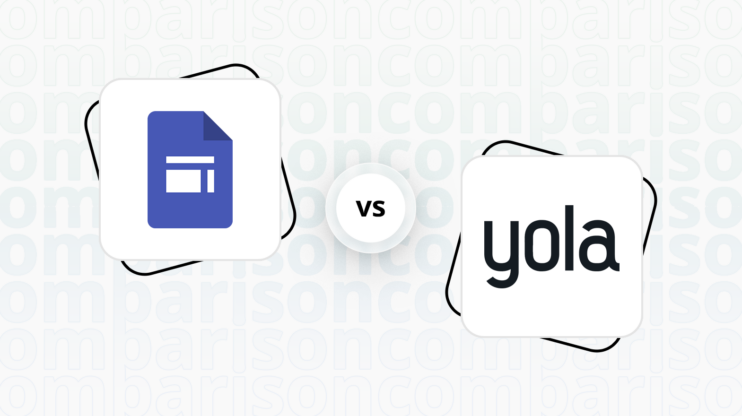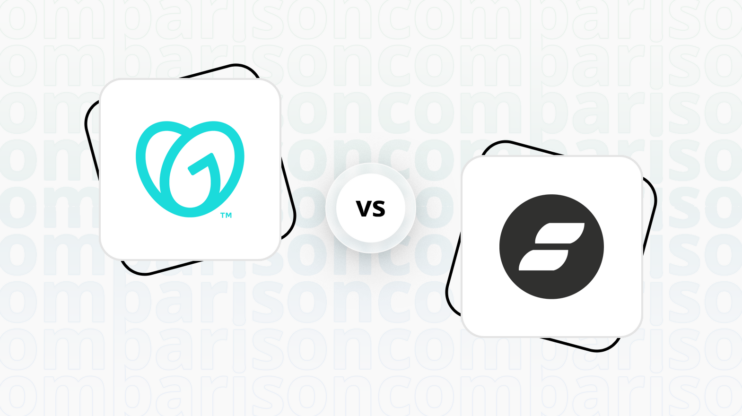Final verdict
Google Sites and Drupal cater to different user needs, each excelling in specific areas.
-
Google Sites (Overall Grade: 5.6/10)
is ideal for users seeking a simple, collaborative website builder with seamless integration with Google services. It offers a user-friendly interface, making it easy for individuals with no coding experience to create and publish websites. However, it lacks advanced customization options and built-in ecommerce features, making it less suitable for complex websites or online stores. -
Drupal (Overall Grade: 6.4/10)
stands out for its flexibility and extensibility, making it a powerful choice for developers and businesses needing custom functionalities. It offers a wide range of modules and themes, robust ecommerce capabilities, and advanced security features. However, its steep learning curve and need for manual configuration may be challenging for beginners.

|

|
|
|---|---|---|
|
Design functionalities & templates |
4.9 |
7.8 |
|
Ease of use |
8.3 |
5.4 |
|
Ecommerce |
1.8 |
7.5 |
|
Website Editors |
7.0 |
7.5 |
|
Product testing options |
6.9 |
7.1 |
|
Price |
8.1 |
5.7 |
|
Hosting quality |
8.2 |
0 |
|
Website speed optimization |
3.3 |
6.4 |
|
Plugins/extensions and integrations |
6.4 |
8.6 |
|
Marketing features |
2.6 |
8.0 |
|
Customer support |
7.2 |
6.7 |
|
Website security |
9.3 |
8.3 |
|
AI capabilities |
0 |
7.5 |
|
User Management |
7.8 |
9.1 |
Best for ecommerce
 1.8
1.8
 7.5
7.5
Verdict
: Google Sites vs Drupal shows a clear distinction in ecommerce capabilities. Drupal is the superior choice for ecommerce, offering extensive features and flexibility, while Google Sites lacks built-in ecommerce functionalities.
-
Google Sites
: Google Sites is not designed for ecommerce. It lacks built-in ecommerce features, making it unsuitable for online stores. Users would need to rely on external integrations or services to add ecommerce capabilities, which can be cumbersome and limited in functionality. -
Drupal
: Drupal excels in ecommerce with its Drupal Commerce module, providing a robust and flexible solution. It offers features like product management, shopping cart, payment gateway integration, and customizable workflows, making it ideal for complex and scalable ecommerce needs.
Best for informational & business websites
 7.2
7.2
 7.5
7.5
Verdict
: When it comes to creating informational and business websites, Drupal edges out Google Sites due to its flexibility and extensive customization options. However, Google Sites offers a more user-friendly experience, making it a solid choice for those who prioritize ease of use.
-
Google Sites
: Google Sites is ideal for users who need a straightforward, collaborative platform to create informational websites quickly. Its drag-and-drop interface and seamless integration with other Google services make it accessible for beginners and teams. With a score of 7.2, it provides a user-friendly experience but may lack the advanced customization options needed for more complex sites. -
Drupal
: Drupal, with a score of 7.5, is a powerful open-source CMS that excels in flexibility and extensibility. It is suitable for creating complex, highly customized websites. While it has a steeper learning curve, its vast array of modules and themes allows for extensive customization, making it a versatile choice for various types of informational and business websites. When comparing Google Sites vs Drupal, Drupal stands out for users who need advanced features and are willing to invest time in learning the platform.
Detailed comparison
Design functionalities & templates
Design FunctionalitiesRepresents how well each platform allows for creative design and customization of websites.Score Components:
- Template Variety (30%): Range and quality of design templates.
- Customization (30%): Flexibility and options for design alterations.
- User Interface (20%): Ease and intuitiveness of the design process.
- Responsiveness (10%): Adaptability to different devices and screen sizes.
- Innovation (10%): Unique design features and tools.
 4.9
4.9
 7.8
7.8
🏆
Winner: Drupal.
If you’re looking for a platform that offers more creative control, a wide array of design features, and a vast selection of templates, Drupal is the preferred choice.
Google Sites offers a limited number of templates suitable for various purposes, from personal blogs to business websites, with both free and premium options available. These templates are designed for user engagement, simplicity, and functionality, allowing for customization to meet specific needs. However, compared to other website builders like 10Web or Squarespace, Google Sites might offer less variety in templates and design customization options.
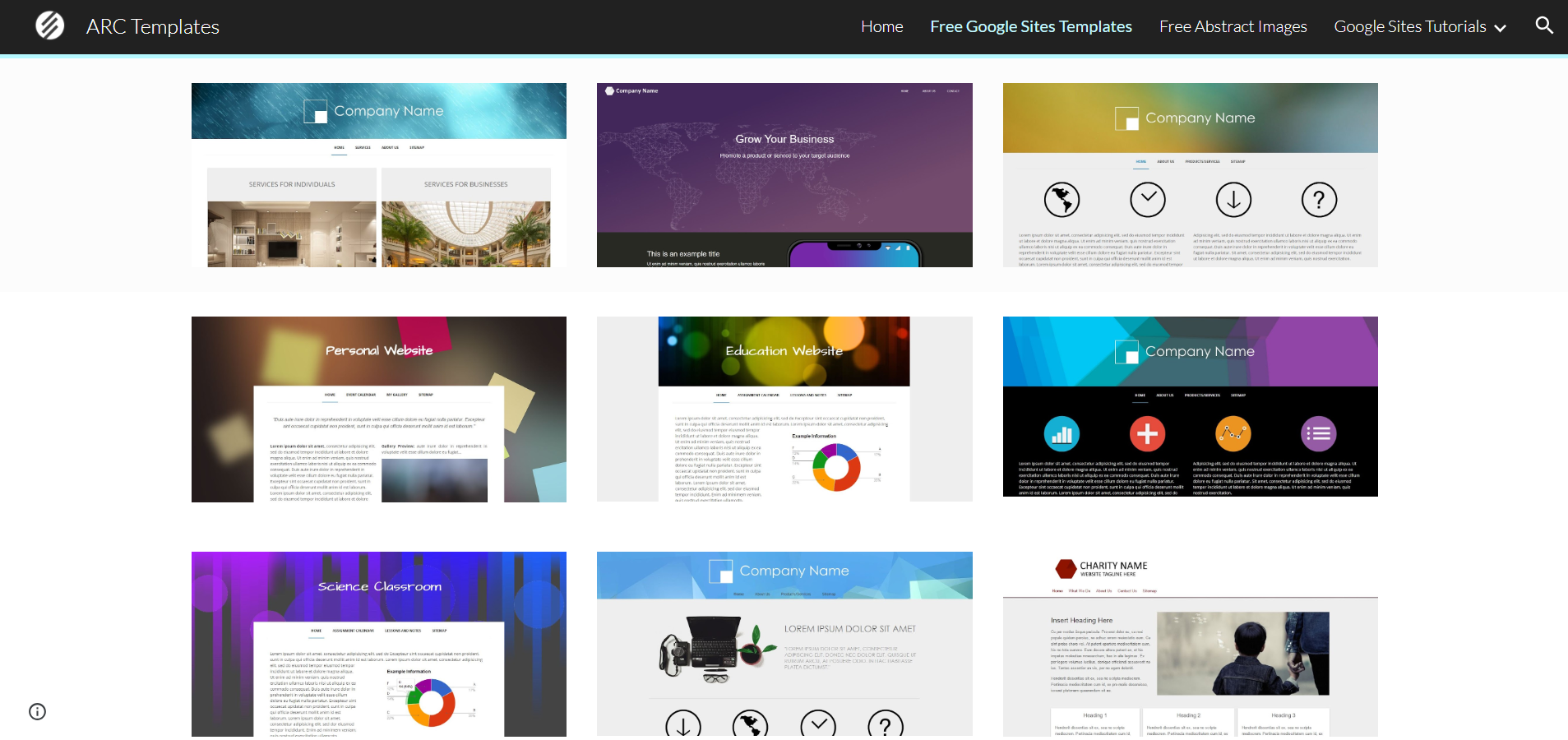

Compared to Google Sites, Drupal, as a highly flexible and powerful content management system, offers a vast array of templates and designs to cater to virtually any website need. With thousands of themes available, users can choose from minimalist designs, industry-specific layouts, and highly customizable multipurpose themes. These templates are designed to be responsive, ensuring that websites look great on any device. Moreover, the Drupal community continuously contributes new designs and templates, expanding the options for users to keep their websites modern and engaging.
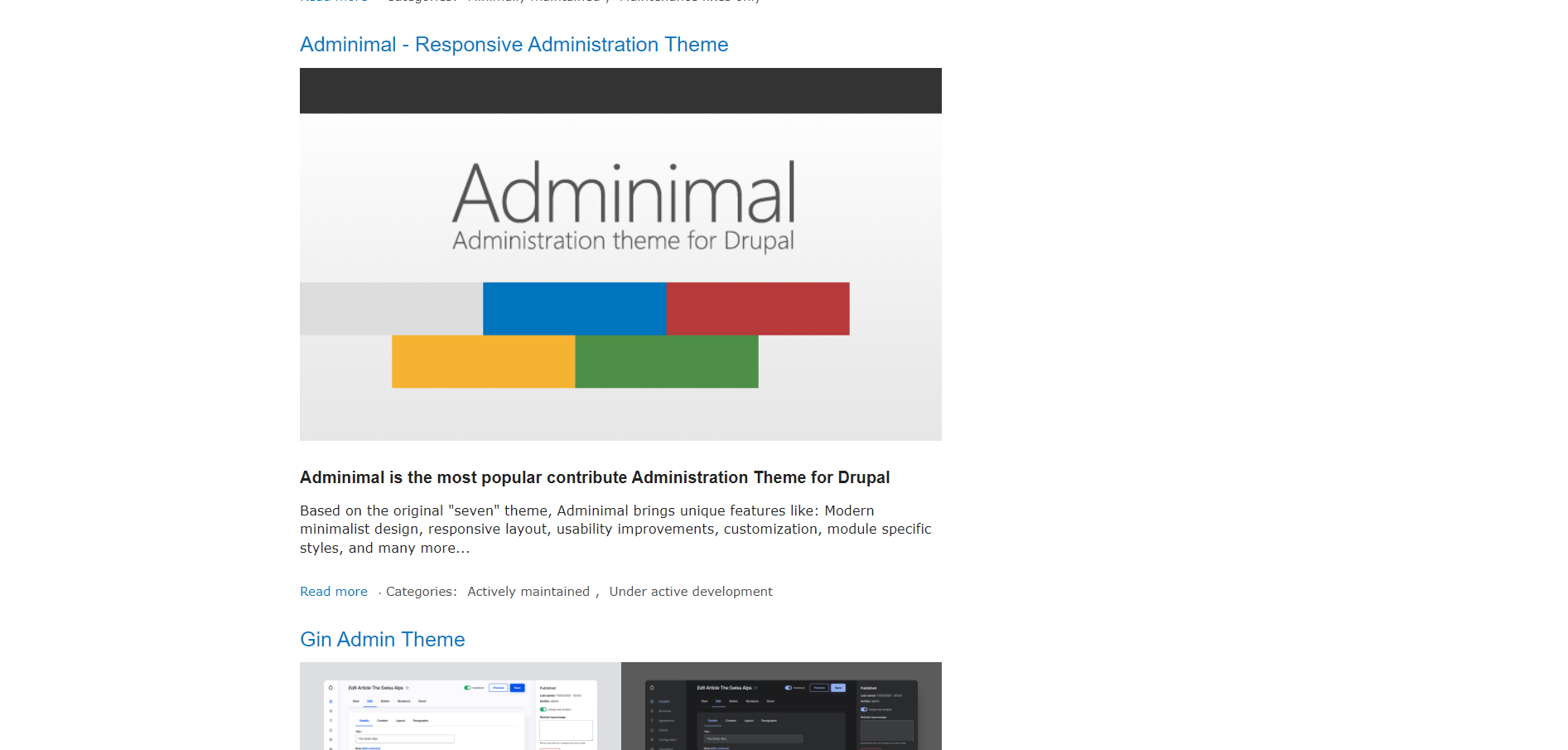
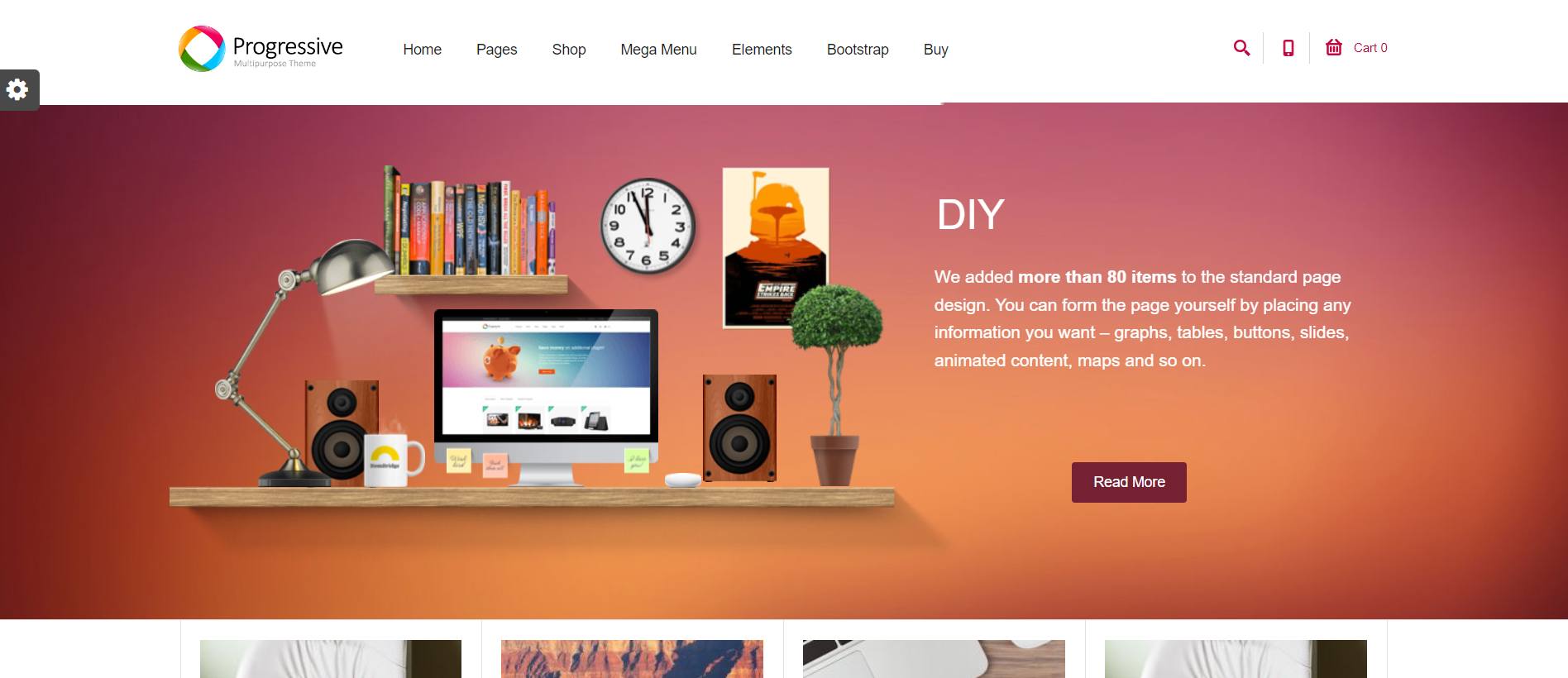
Get a head start on website creation with AI
Create a custom website tailored to your business needs 10X faster with 10Web AI Website Builder!
Ease of use
Ease of useReflects the platform’s overall user-friendliness.Score
Components:
- Learning curve (40%): Quickness and ease of getting started.
- Interface design (30%): Simplicity and intuitiveness of layout.
- User guidance (20%): Quality of tutorials and support.
- Flexibility (10%): Adaptability to various user skills.
 8.3
8.3
 5.4
5.4
🏆 Winner: Google Sites
. Scoring 8.3, Google Sites offers a user-friendly interface that allows individuals with no coding experience to create and publish websites easily. On the other hand, Drupal, with a score of 5.4, is a powerful platform for building complex websites and applications, but its flexibility comes with a steep learning curve, especially for beginners.
Learning Resources
Both Google Sites and Drupal offer a wide array of learning resources. Google Sites provides practical guides for educators and comprehensive digital skill development programs for the wider public. Drupal offers extensive official documentation, a vibrant community forum, and a variety of online courses and tutorials.
For ecommerce
EcommerceMeasures the platform’s effectiveness in supporting online business activities.Score Components:
- Ecommerce themes and templates (20%): Variety and design of templates.
- Product management (25%): Ease of managing and organizing products.
- Payment options (25%): Variety and convenience of payment methods.
- Ecommerce features (20%): Features for managing an ecommerce store.
- Integration (10%): Compatibility with external e-commerce tools and services.
 1.8
1.8
 7.5
7.5
When it comes to ecommerce, Drupal is a clear winner over Google Sites. Drupal, with its Drupal Commerce module, offers a flexible ecommerce solution that can be seamlessly integrated into its content management system. It provides a wide array of features including product management, shopping cart, payment gateway integration, and customizable workflows that cater to complex pricing models and product variations. On the other hand, Google Sites does not have built-in ecommerce features or tools for setting up an online store directly. To have a full-fledged ecommerce platform with Google Sites, you’d need to rely on external integrations or services.

|

|
|
|---|---|---|
|
Ecommerce themes and templates |
0.0 |
7.8 |
|
Product page customization |
0.0 |
8.3 |
|
Payment processing and commissions |
1.0 |
7.5 |
|
POS capabilities |
0.0 |
5.5 |
|
Payment gateways |
2.0 |
7.7 |
|
Product numbers |
0.0 |
7.0 |
|
Additional ecommerce features |
0.5 |
8.0 |
Drupal ecommerce features:
- Shopping Cart and Checkout Process
- Payment Gateway Integration
- Order Management and Invoicing
- Tax Calculation and VAT Support
- Shipping and Fulfillment
- Promotions and Discounts
- Reporting and Analytics
- Security and Compliance
Google Sites ecommerce features:
Google Sites itself does not have built-in eCommerce features.
Ecommerce themes & templates
Drupal offers a wide array of ecommerce themes designed to cater to different types of online stores, from clean and simple designs to more sophisticated and feature-rich options. These themes are built with responsiveness in mind, ensuring that stores function seamlessly across various devices. Themes like Fiora, DrupalMag, and Storefront highlight the diversity available, offering customization options to match the unique needs of each business. The availability and functionality of these themes underscore Drupal’s flexibility and power as an ecommerce platform. Google Sites, on the other hand, does not have any ecommerce templates.
Product page customization
Drupal offers extensive customization possibilities for product pages through its modular architecture, allowing for detailed content types, flexible displays with Views, and theme customizations. The Drupal Commerce module enriches ecommerce functionalities, enabling tailored product management, checkout flows, and payment systems. With the ability to develop custom modules, Drupal provides a range of possibilities to meet specific ecommerce needs. Google Sites lacks any product page customization features, as the products can be listed with embedding third-party platforms, all the customization can be done within the mentioned platforms.
Payment processing
Drupal supports a wide range of payment gateways through third-party modules, including popular ones like PayPal, Stripe, and Authorize.Net. These modules enable seamless integration for ecommerce functionalities on Drupal sites. While Drupal itself does not charge any commissions or transaction fees, the individual payment gateways integrated with it do have their own fee structures, which typically include per-transaction charges and may also have monthly fees. The specific fees depend on the chosen payment gateway and the terms of service agreed upon by the website owner. You can integrate payment gateways into Google Sites using external tools or links, not through native features. This can be done by embedding HTML code for payment buttons from services like PayPal, Square, or Stripe, or by linking to an external checkout page. Third-party ecommerce widgets also offer a way to add payment functionalities. However, Google Sites doesn’t offer the comprehensive ecommerce capabilities that dedicated platforms provide.
Website Editors
Website EditorsEvaluates the platforms’ website building and editing capabilities.Score Components:
- Customization tools (40%): Range and power of editing features.
- Editor usability (30%): User experience within the editor.
- Design flexibility (20%): Freedom in layout and design changes.
- Update and maintenance ease (10%): Simplicity of updating and maintaining the site.
 7.0
7.0
 7.5
7.5
🏆
Winner: Drupal
. Drupal, with a score of 7.5, offers a wide range of features tailored for content creation and management. It supports rich text editing, enabling users to format text, insert links, images, and media, as well as create tables and lists with ease. The editor is highly customizable, allowing administrators to configure toolbars and options according to the needs of their site. Furthermore, it integrates seamlessly with Drupal’s content management system, supporting features like automatic content saving, version control, and access control, making it a powerful tool for building and managing diverse web content.
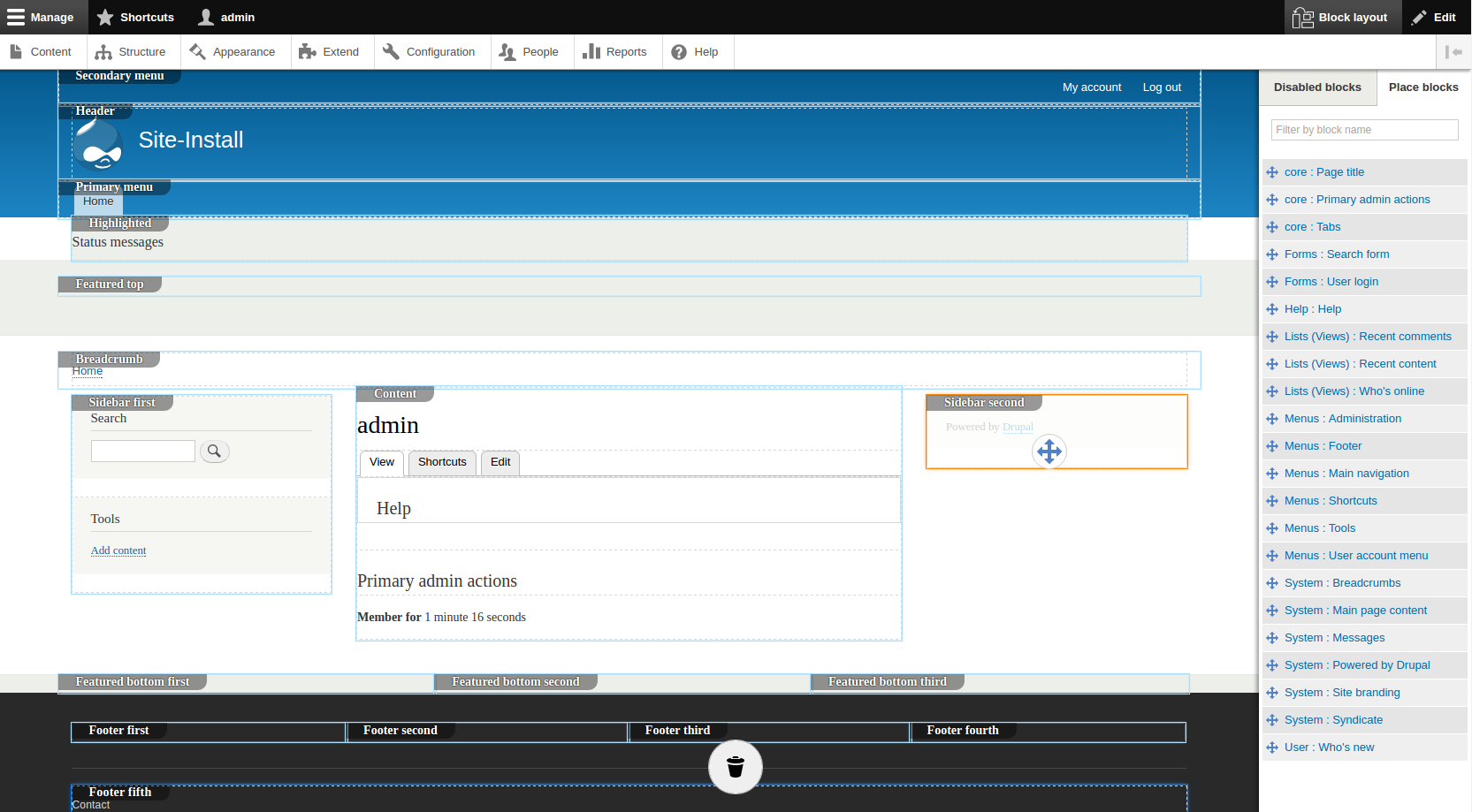
Google Sites’ editor, scoring 7.0, offers a user-friendly website builder editor that allows users to create and design websites without needing coding knowledge. With its drag-and-drop interface, users can easily add, customize, and arrange elements such as text, images, and videos on their web pages. It also provides a variety of templates and design options to help users get started quickly and ensure their site looks professional. Additionally, Google Sites integrates seamlessly with other Google services, enabling the incorporation of Google Docs, Sheets, Slides, and Maps directly into the website.
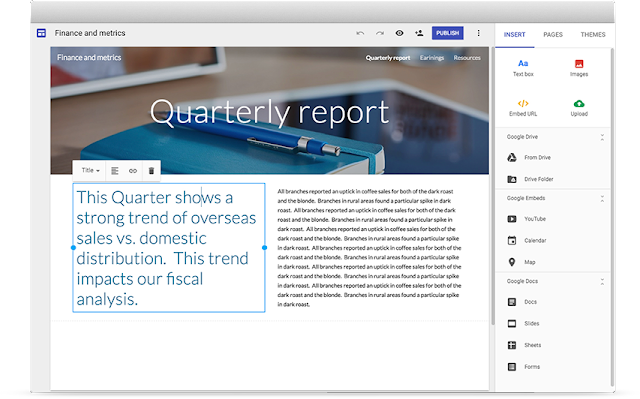
Mobile editor/app
 0
0
 0
0
🏆
Winner: None
. Neither Google Sites nor Drupal offer a dedicated mobile editor app. This means that users cannot edit their websites on the go using a mobile device. This could be a significant drawback for users who prefer the convenience of mobile editing. Therefore, if mobile editing is a crucial factor for you, you might want to consider other website builders that offer this feature.
Product testing options
Product Testing OptionsAssesses the options for trying out platform features before commitment.Score Components:
- Trial quality (40%): Extent and usefulness of the trial or free version.
- Feature accessibility (30%): How many features are available to test.
- Trial duration (20%): Length of the trial period.
- Ease of transition (10%): Smoothness of moving from trial to paid plans.
 6.9
6.9
 7.1
7.1
Overall Result
:
Drupal Wins
. Drupal scores slightly higher than Google Sites with a score of 7.1 compared to Google Sites’ 6.9. Both platforms offer a free version, but Google Sites provides a 14-day free trial where some premium features can be tested. Drupal, being an open-source CMS, doesn’t offer a trial version or the possibility to test premium features. However, as there are no payments required for Drupal, it doesn’t need a money-back guarantee.

|

|
|
|---|---|---|
|
Free Plan |
Yes |
Yes (open-source software) |
|
Trial Duration |
14 days |
No |
|
Testing Premium Features |
Possible within trial period |
No |
|
Money Back Guarantee |
No |
Not required (open-source software) |
Price
PriceLooks at the cost-effectiveness and value for money of each platform.Score Components:
- Plan value (40%): What each pricing tier offers.
- Transparency and clarity (30%): Clearness of pricing structures.
- Flexibility of plans (20%): Range of options to suit different budgets.
- Hidden costs (10%): Additional expenses not included in the plan.
 8.1
8.1
 5.7
5.7
Google Sites offers a range of pricing plans, including enterprise plans, while Drupal is a free open-source CMS, but requires separate purchases for domain, web hosting, and website builder subscriptions.

|

|
|
|---|---|---|
|
$0-$10 |
Business Starter ($7.20/month): This plan includes basic features suitable for individuals or small businesses, offering professional email through Gmail, 30GB of storage per user, and video meetings for up to 100 participants. It allows to manage 1 website and there is no limitation on number of pages. Value for price: 6.0 |
No offering at this amount. |
|
$10-$20 |
Business Standard ($14.40/month): Suitable for growing businesses, this plan provides 2 TB of storage per user, video meeting capacity for up to 150 participants with recording features, and access to smart booking pages and shared drives. It allows to manage 1 website and there is no limitation on number of pages. Value for price: 7.5 |
No offering at this amount. |
|
$20+ |
Business Plus ($21.60/month): Designed for larger businesses needing more robust capabilities, offering 5 TB of storage per user, advanced security options, and video meetings for up to 500 participants. It allows to manage 1 website and there is no limitation on number of pages. Value for price: 8.5 |
No offering at this amount. |
location. As a result in rare cases the prices displayed here can differ from the ones you see on their
websites.
Hosting quality
Hosting
qualityExamines the reliability and performance of the hosting solutions.Score Components:
- Uptime (40%): Consistency and reliability of website availability.
- Speed (30%): Loading times and performance.
- Bandwidth and storage (20%): Sufficiency of resources provided.
- Data centers (10%): Quality and distribution of hosting infrastructure.
 8.2
8.2
 0
0
🏆
Winner: Google Sites
Google Sites offers cloud-based managed hosting with a 99.9% uptime guarantee and operates 21 data centers globally. On the other hand, Drupal does not directly provide hosting services, and the uptime, uptime guarantee, and data centers depend on the chosen hosting provider. Therefore, Google Sites has a higher hosting quality score.

|

|
|
|---|---|---|
|
Do they offer hosting? |
Yes, basic storage with 100MB free per site, can be increased by upgrading to Google Workspace |
No, Drupal itself does not directly provide hosting services |
|
Data Centers: |
Google operates a total of 21 data centers across the globe: 2 in Asia, 5 in Europe, 13 in US and 1 in South America |
Data centers depend on hosting providers |
|
Type of hosting: |
Cloud based managed hosting |
Drupal itself isn’t a hosting platform, there are various options when choosing the type of hosting for websites built with Drupal, such as: Shared Hosting, VPS Hosting, Dedicated Server Hosting, Cloud Hosting |
|
Uptime: |
99.9% |
Uptime depends on hosting provider |
|
Uptime Guarantee: |
Yes, 99.9% |
Uptime guarantee depends on hosting provider |
Website Speed Optimization
Website Speed OptimizationEvaluates optimization of website loading timesScore Components:
- PageSpeed Score (30%): Google’s score indicating performance optimization.
- Loading Time (30%): The average time until a website is fully interactive.
- Mobile Optimization (15%): Optimization effectiveness for mobile devices.
- Resource Optimization (15%): Optimizing images, scripts, and other heavy resources.
- CDN Usage (10%): Use of CDN to enhance speed across geolocations.
 3.3
3.3
 6.4
6.4
🏆 Winner: Drupal
Both Google Sites and Drupal prioritize website performance and page speed, but Drupal’s flexibility and extensibility give it an edge over Google Sites when it comes to website speed optimization.

|

|
|
|---|---|---|
|
Focus |
Automated Optimization, CDN, Mobile Optimization, Browser Caching, Code Minification, Use of AMP |
Drupal offers numerous guides and tutorials on speed optimization, users can optimize almost all aspects of their website. |
|
Performance Tools |
Google Lighthouse, PageSpeed Insights |
Google PageSpeed Insights Integration |
|
Key Strategies |
Automated Optimization, CDN, Mobile Optimization, Browser Caching, Code Minification, Use of AMP |
Users can optimize almost all aspects of their website. |
|
Load Times |
Google does not disclose statistics about website Page Speed scores, or load times. |
Load times and PageSpeed scores vary depending on optimization and website complexity. |
|
Page Speed Scores Range |
Google does not disclose statistics about website Page Speed scores, or load times. |
Load times and PageSpeed scores vary depending on optimization and website complexity. |
|
Core Web Vitals Improvement |
Emphasis on LCP, FID, CLS improvements |
Core Web Vitals improvements depend on users |
Drupal, an open-source CMS, allows users to optimize almost all aspects of their website, which can lead to better website speed optimization. The load times and PageSpeed scores vary depending on the optimization and complexity of the website. The improvement of Core Web Vitals depends on the users.
On the other hand, Google Sites, a structured web page-creation tool, focuses on automated optimization, CDN, mobile optimization, browser caching, code minification, and the use of AMP for speed optimization. However, Google does not disclose statistics about website Page Speed scores or load times. The platform emphasizes on LCP, FID, CLS improvements for Core Web Vitals.
Get a head start on website creation with AI
Create a custom website tailored to your business needs 10X faster with 10Web AI Website Builder!
Plugins and integrations
Plugins and integrationsMeasures the range and effectiveness of additional plugins and integrations.Score Components:
- Variety of options (40%): Range of available add-ons.
- Integration smoothness (30%): Ease of integrating plugins into the site.
- Quality of plugins (20%): Functionality and reliability of the options.
- Custom integration capabilities (10%): Support for custom or third-party integrations.
 6.4
6.4
 8.6
8.6
🏆 Winner: Drupal.
With a score of 8.6, Drupal outperforms Google Sites (6.4) in terms of plugins and integrations. Drupal’s open-source nature allows for a vast array of over 51,000 modules, significantly enhancing its capabilities beyond core features. Google Sites, while offering a wide array of plugins and extensions, falls short in comparison to Drupal’s extensive offerings.
However, Google Sites’ plugins are easy to use and require no coding knowledge, making it a suitable choice for users without technical expertise.

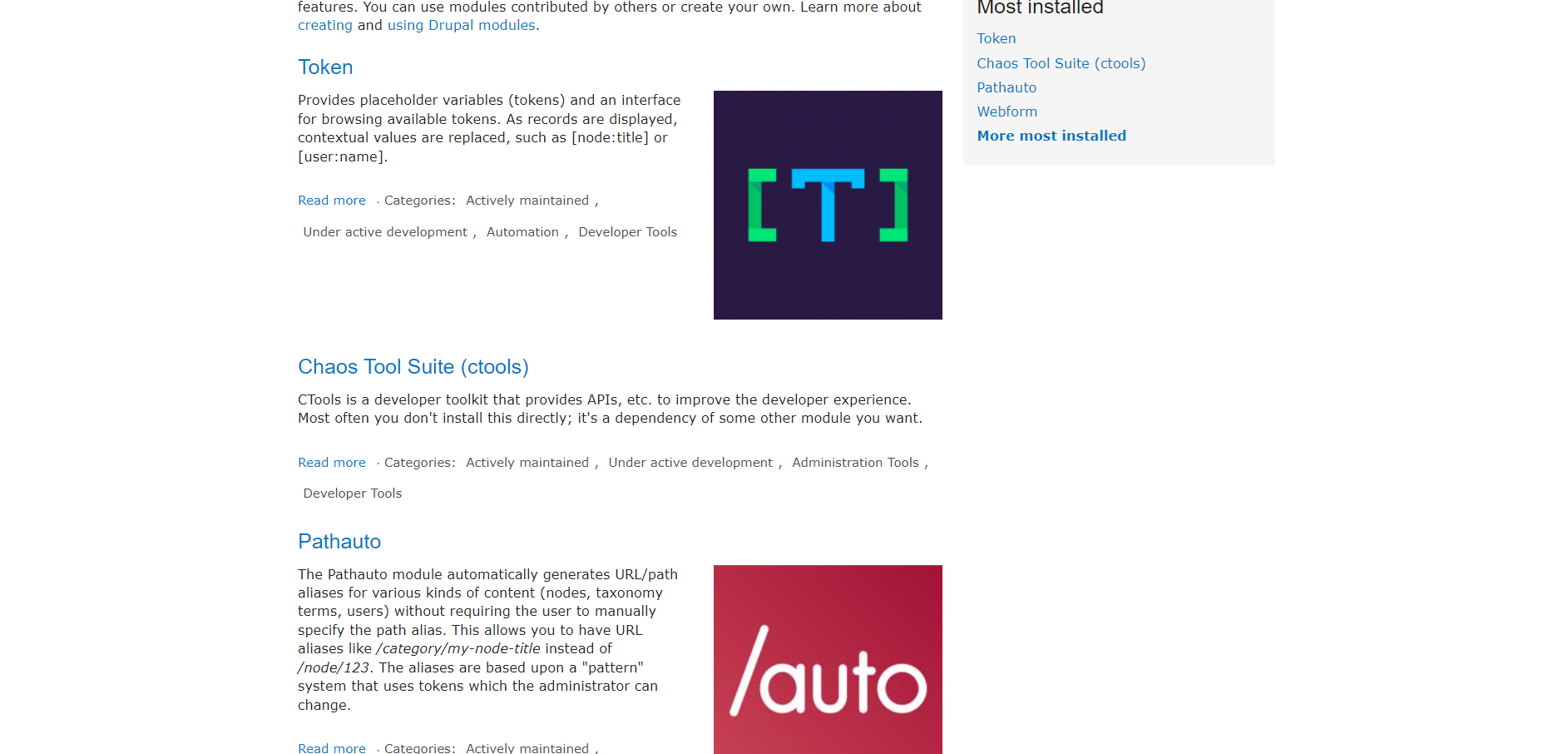
Marketing Features
Design FunctionalitiesRepresents how well each platform allows for creative design and customization of websites.Score Components:
- Template Variety (30%): Range and quality of design templates.
- Customization (30%): Flexibility and options for design alterations.
- User Interface (20%): Ease and intuitiveness of the design process.
- Responsiveness (10%): Adaptability to different devices and screen sizes.
- Innovation (10%): Unique design features and tools.
 2.6
2.6
 8.0
8.0
🏆
Overall Winner: Drupal
. Drupal stands out for its comprehensive set of marketing features, especially in SEO, email marketing, blogging, and social media integration. Google Sites, while offering basic SEO and analytics features, lacks in email marketing, blogging, and ads and promotions.

|

|
|
|---|---|---|
|
SEO Tools |
Basic SEO settings | Comprehensive SEO features with SEO modules |
|
Email Marketing |
No | Yes, with third-party extensions |
|
Blogging |
No | Yes |
|
Social Media Integration |
Basic integration with social media links and widgets | Comprehensive integration with social media platforms |
|
Analytics and Reporting |
Google Analytics integration | Basic built-in features and Google Analytics integration |
|
Ads and Promotions |
No | Yes, with third-party extensions |
Customer Support
Customer supportEvaluates the quality and availability of support options.Score Components:
- Response time (40%): Speed of support responses.
- Support quality (30%): Effectiveness and helpfulness of the support.
- Availability (20%): Range of support channels (phone, chat, email).
- Resource richness (10%): Quality of self-help and educational materials.
 7.2
7.2
 6.7
6.7
🏆 Winner: Google Sites
. In the comparison of Google Sites vs Drupal, Google Sites takes the lead with a customer support score of 7.2. Google Sites offers a range of support options, including a Help Center, community forums, and 24/7 direct support for Google Workspace customers. This ensures that users have access to assistance whenever they need it, with varying levels of support based on their subscription tier.
Drupal, with a customer support score of 6.7, provides support through its community forums and documentation on Drupal.org. Additionally, professional 24/7 support services are available via providers like Drupal Connect and GreenGeeks. While Drupal’s community and professional support options are robust, they may not be as immediately accessible as Google Sites’ direct support for Google Workspace customers.
Security
SecurityLooks at the platforms’ security measures and data protection.Score Components:
- Data protection (40%): Safeguards for user and customer data.
- SSL and encryption (30%): Implementation of secure connections.
- Compliance (20%): Adherence to industry security standards.
- Regular updates (10%): Frequency of security updates and patches.
 9.3
9.3
 8.3
8.3
🏆
Winner: Google Sites
. Google Sites, part of the Google Workspace, offers robust security measures including SSL encryption, two-factor authentication, automatic malware scanning, and compliance with international data protection standards. Google’s infrastructure also provides DDoS protection and data redundancy, ensuring a secure environment for website creators and visitors.
Drupal, on the other hand, emphasizes security through regular updates, built-in mechanisms for preventing common web vulnerabilities, and advanced security features like two-factor authentication. However, it requires more manual configuration and maintenance to ensure optimal security, making Google Sites the more user-friendly and secure option for most users.
AI Capabilities
AI capabilitiesMeasures the effectiveness of AI-driven features and tools.Score Components:
- Automation efficiency (40%): Impact of AI on streamlining processes.
- Personalization (30%): AI-driven customization for users or customers.
- AI-Assisted design (20%): Role of AI in website design and functionality.
- Data analysis (10%): Use of AI in interpreting user data and analytics.
 0
0
 7.5
7.5

|

|
|
|---|---|---|
|
AI Builder |
|
|
|
AI Ecommerce features |
|
AI-enhanced e-commerce with chatbots, content creation, marketing automation, and cognitive services |
|
AI content generation |
|
AI-enhanced content creation with modules like AI Connect, OpenAI, and ChatGPT |
|
Additional AI features |
|
AI-based search enhancements, content personalization, automated content moderation, language translation, content localization, and accessibility improvements |
🏆 Winner: Drupal
. Drupal, with a score of 7.5, integrates AI across various functionalities, enhancing e-commerce, content creation, and user interactions. Drupal’s AI capabilities streamline operations and significantly enhance user engagement and satisfaction on Drupal-based platforms. On the other hand, Google Sites does not have any AI capabilities.
User Management
User ManagementAssesses the platforms’ capabilities in managing user roles, permissions, and accessibility.Score Components:
- Role Customization (40%): Flexibility in creating and defining user roles and
permissions. - Ease of Management (30%): User interface and tools for managing users.
- Access Control (20%): Effectiveness of access control measures for different user
levels. - Scalability (10%): Ability to manage a growing number of users efficiently.
 7.8
7.8
 9.1
9.1
🏆 Winner: Drupal
. Both Google Sites and Drupal allow multiple users to collaborate on a website, but they differ in their approach to user roles and permissions.
- Google Sites allows multiple users to collaborate with different roles, including Owners, who have full control, and Editors, who can modify content but not site settings. There’s no strict limit on the number of users who can edit a site, allowing flexibility in management and development. Viewers can only see the site, with no editing permissions. This structure supports collaborative website building with varied levels of access and control for different users.
- Drupal’s flexible permission and role system allows for an unlimited number of users to manage and edit a website, only constrained by server capacity and practical management considerations. Administrators can create various roles, such as “Editor” or “Administrator”, each with customized permissions. There’s no inherent limit in Drupal on the number of users with administrative or editing capabilities, enabling extensive collaboration and content management possibilities.
Drupal User Roles and Access Levels:
| Role | Description | Access Highlights |
|---|---|---|
| Editor | Users responsible for content creation, editing, and publishing. | Can create, edit, delete, and publish content; can also manage comments. |
| Moderator | Users focused on site moderation, including comment and user management. | Can approve or delete comments, block users, and manage reported content. |
| Administrator | Users with full access to all administrative features of the site. | Can change site configuration, manage all content, users, permissions, and install modules/themes. |
Additional Features

|

|
|
|---|---|---|
|
SSL Certificate |
|
|
|
Custom Domain |
|
|
|
Free Custom Domain Included |
|
|
|
International Domains |
|
|
|
Mobile Responsive |
|
|
|
Page Speed |
|
|
|
Website Builder Mobile App |
|
|
|
Convert a Website To An App |
|
|
|
Website Analytics |
|
|
|
Multilingual Sites |
|
|
|
Multiple Users |
|
|
User Feedback
Users consistently praise Google Workspace, particularly Google Sites, for its seamless integration, ease of use, and collaborative features, making it a go-to solution for various professional and educational needs. The platform’s simplicity and user-friendly interface are lauded, enabling effortless website creation and sharing of information within organizations. While some users desire more customization options and additional features, overall, Google Workspace remains highly valued for its versatility and streamlined workflow facilitation.
Users appreciate Drupal for its ease of use, security, and flexibility as an open-source CMS, highlighting its ability to scale and support a variety of websites and applications with modern technology tools. The community and documentation are frequently mentioned positives, providing ample support and resources. However, criticisms include a relative lack of plugins and themes compared to competitors like WordPress, the learning curve for customization without coding, and some challenges with installation and updates. The platform is praised for its robust content management capabilities, enabling users to manage content and user access efficiently. Overall, feedback underscores Drupal’s strength in creating secure, customizable, and scalable web solutions, despite some desires for more intuitive UI and easier setup.
The making of this blog
We followed a clear, step-by-step process to write and research this article.
FAQ
Which platform is easier to use, Google Sites or Drupal?
Can I build an ecommerce website with Google Sites or Drupal?
How do Google Sites and Drupal compare in terms of design functionalities and templates?
Which platform offers better website speed optimization?
How do Google Sites and Drupal differ in their approach to user management?
Which platform provides more comprehensive customer support?
In terms of security, which platform is more secure?
Are there any AI capabilities in Google Sites or Drupal?










